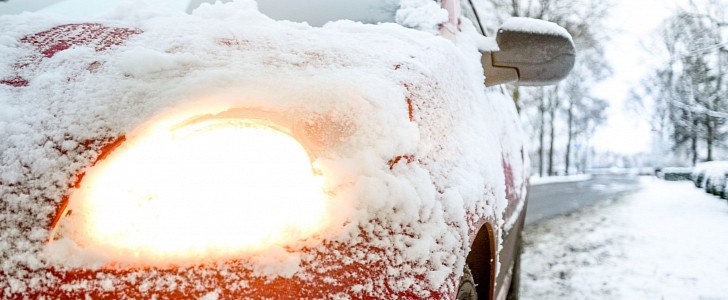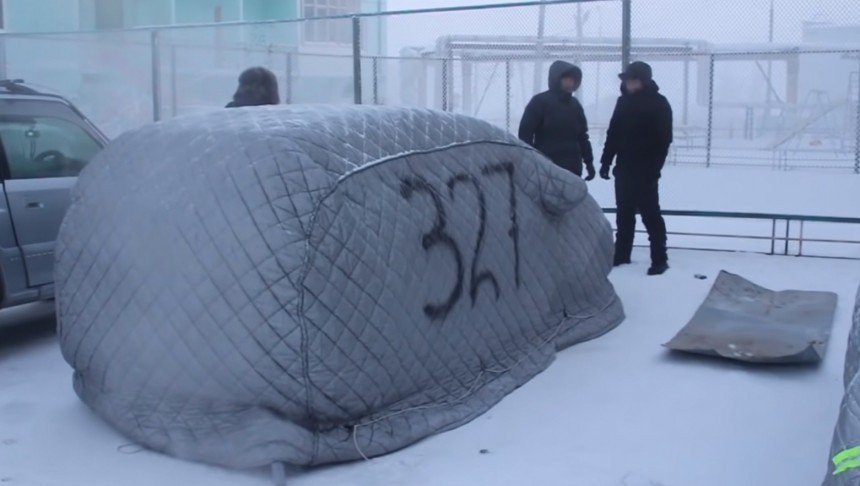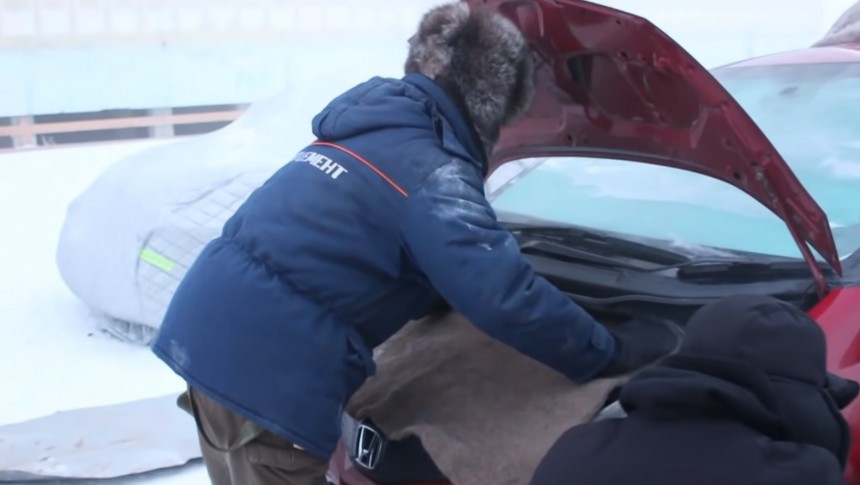Ever have to scrape ice off your vehicle before getting in? If you live somewhere where you get all four seasons, you probably have. And you probably prefer summer, spring, or fall to winter. But how do things work in the coldest inhabited settlement on Earth?
It is called Oymyakon, and it is a small settlement in Russia, named after the nearby Oymyakon River. The most important road nearby is called Kolyma Highway, which is also known as Road of Bones because of the vast number of people who died while building it, some of whom are buried beneath or just near the road.
Four years ago, the population of Oymyakon was estimated at 500 to 900 people, which means it has shrunk from its peak of approximately 2,500. Unofficial estimates place the current population below 500 residents. As some people have joked on the topic, the smartest survival idea in Siberia is moving anywhere else.
The climate in Oymyakon is described as "extreme subarctic climate," which means that seeing a thermometer below the freezing point is more commonplace than staying above it. The settlement “enjoys” extreme weather, which means that they get extremely hot in the summer, while staying freezing in the winter.
According to the World Meteorological Organization, Oymyakon's record-high temperature was recorded at 34.6 Celsius (94.3 F) in July, while the record low was clocked in at –67.7 Celsius (-89.9 F). That is so cold that using whiskey as windshield wiper fluid would be an even worse idea than it sounds, as it will freeze.
There is even a monument in the town square that commemorates an unofficial reading of –71.2 C (-96.2 F) that was recorded in January 1924, but it is considered unofficial. Years later, in 1933, the local weather station officially recorded –67.7 C (-89.9 F). Despite this, people who reside in the area use cars.
You have probably read our winter survival guide, but it has nothing on what it takes to use a car in Oymyakon. At this point, we should underline the fact that Oymyakon is an extreme environment, so measures employed there are only meant to be used as such in that region, with all accompanying risks. In other words, do not try to do this to your car during winter, as it might be something between overkill and just dangerous.
For example, some vehicle owners in the region do not turn off the engines of their automobiles once they get to their destination. Instead, they leave the engine running with the key in the ignition but lock the doors with a spare key. Doing so in other countries is illegal, not to mention dangerous. Some residents leave their vehicles running from Autumn all the way to Spring.
While the refuel procedure is unclear in this case, it is possible to refuel a vehicle with its engine still running, but it is dangerous at the same time. Others prefer to have an alarm with a remote start function that includes a temperature sensor, which can trigger an engine start if the temperature inside the vehicle goes below a certain point. This method will save a bit of fuel compared to the one previously described, but the vehicle still needs to be covered overnight.
Workshops in the area fit an extra windshield over the factory one to prevent it from freezing while driving or when parked overnight. As those who have visited the area can attest, it does not matter how much heat you manage to pump into the interior of a vehicle, the side windows will freeze anyway.
Those who live in apartment buildings use extension cords to power various industrial heating devices just to bring the fluids under the hood to a more reasonable temperature before attempting to start the engine.
Some residents prefer to take their batteries with them inside and connect them to a trickle charger overnight. Others, who have garages, prefer to plug their cars into a domestic socket to enable the use of an engine block heater, as well as a trickle charger and a fuel filter heater.
To enable reliable operation, vehicles in the area use gel batteries or AGM batteries to preserve as much power as possible. Extremely low temperatures are bad for every component of a vehicle, so the automobiles used in Oymyakon go through the worst conditions possible.
Another popular solution is to place a cover over a car to help maintain its temperature. Exhaust gas is routed out with an add-on, and the vehicle can be kept a bit warmer if not used for several days in a row.
From there, starting it can be done using an industrial plug-in heater, which would raise the temperature of the engine block, the oil, coolant, and even fuel. That is why even fuel filters need to be heated.
When temperatures go to extreme lows, drivers place blankets over the engine. Some workshops in the area wrap the exhaust with mineral wool to preserve its heat, while the underbody is usually protected with extra padding made of a material that resembles felt.
Do not worry, as there are workshops in the area that specialize in this kind of modification. If you ask us, though, it is advisable to avoid going to the coldest inhabited place on Earth, though.
Surprisingly, the area does have a public transport system that functions even in extreme cold, and some buses were upgraded to allow ticket purchases with contactless payment. Taxis are also available in the area, so people are not tied down to vehicle ownership.
Four years ago, the population of Oymyakon was estimated at 500 to 900 people, which means it has shrunk from its peak of approximately 2,500. Unofficial estimates place the current population below 500 residents. As some people have joked on the topic, the smartest survival idea in Siberia is moving anywhere else.
The climate in Oymyakon is described as "extreme subarctic climate," which means that seeing a thermometer below the freezing point is more commonplace than staying above it. The settlement “enjoys” extreme weather, which means that they get extremely hot in the summer, while staying freezing in the winter.
According to the World Meteorological Organization, Oymyakon's record-high temperature was recorded at 34.6 Celsius (94.3 F) in July, while the record low was clocked in at –67.7 Celsius (-89.9 F). That is so cold that using whiskey as windshield wiper fluid would be an even worse idea than it sounds, as it will freeze.
There is even a monument in the town square that commemorates an unofficial reading of –71.2 C (-96.2 F) that was recorded in January 1924, but it is considered unofficial. Years later, in 1933, the local weather station officially recorded –67.7 C (-89.9 F). Despite this, people who reside in the area use cars.
You have probably read our winter survival guide, but it has nothing on what it takes to use a car in Oymyakon. At this point, we should underline the fact that Oymyakon is an extreme environment, so measures employed there are only meant to be used as such in that region, with all accompanying risks. In other words, do not try to do this to your car during winter, as it might be something between overkill and just dangerous.
While the refuel procedure is unclear in this case, it is possible to refuel a vehicle with its engine still running, but it is dangerous at the same time. Others prefer to have an alarm with a remote start function that includes a temperature sensor, which can trigger an engine start if the temperature inside the vehicle goes below a certain point. This method will save a bit of fuel compared to the one previously described, but the vehicle still needs to be covered overnight.
Workshops in the area fit an extra windshield over the factory one to prevent it from freezing while driving or when parked overnight. As those who have visited the area can attest, it does not matter how much heat you manage to pump into the interior of a vehicle, the side windows will freeze anyway.
Those who live in apartment buildings use extension cords to power various industrial heating devices just to bring the fluids under the hood to a more reasonable temperature before attempting to start the engine.
Some residents prefer to take their batteries with them inside and connect them to a trickle charger overnight. Others, who have garages, prefer to plug their cars into a domestic socket to enable the use of an engine block heater, as well as a trickle charger and a fuel filter heater.
To enable reliable operation, vehicles in the area use gel batteries or AGM batteries to preserve as much power as possible. Extremely low temperatures are bad for every component of a vehicle, so the automobiles used in Oymyakon go through the worst conditions possible.
Another popular solution is to place a cover over a car to help maintain its temperature. Exhaust gas is routed out with an add-on, and the vehicle can be kept a bit warmer if not used for several days in a row.
From there, starting it can be done using an industrial plug-in heater, which would raise the temperature of the engine block, the oil, coolant, and even fuel. That is why even fuel filters need to be heated.
Do not worry, as there are workshops in the area that specialize in this kind of modification. If you ask us, though, it is advisable to avoid going to the coldest inhabited place on Earth, though.
Surprisingly, the area does have a public transport system that functions even in extreme cold, and some buses were upgraded to allow ticket purchases with contactless payment. Taxis are also available in the area, so people are not tied down to vehicle ownership.











